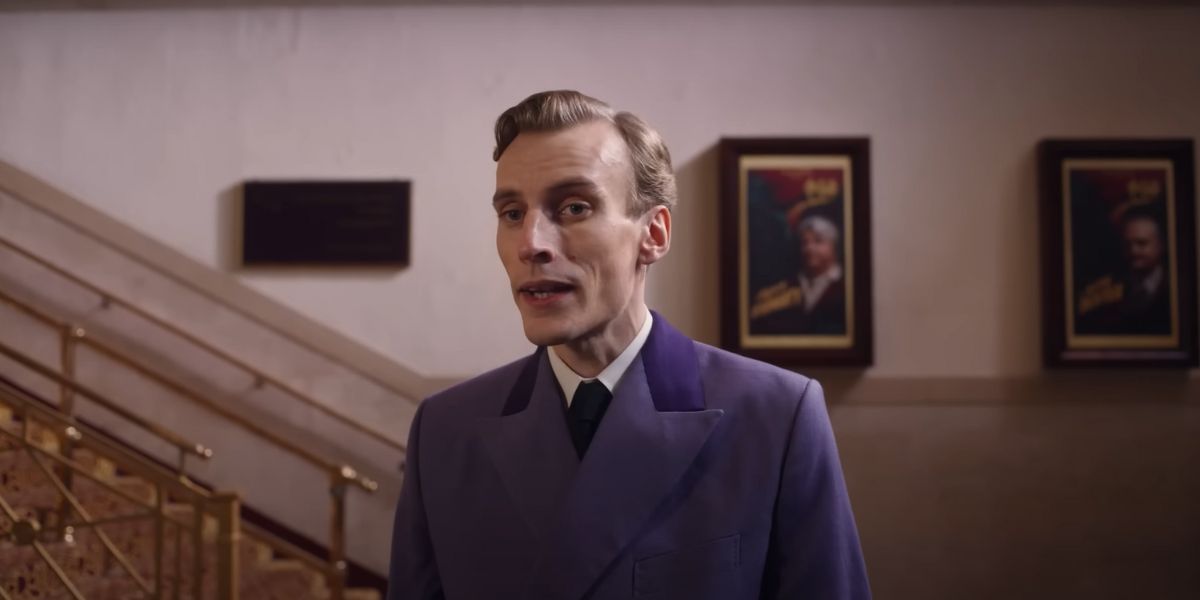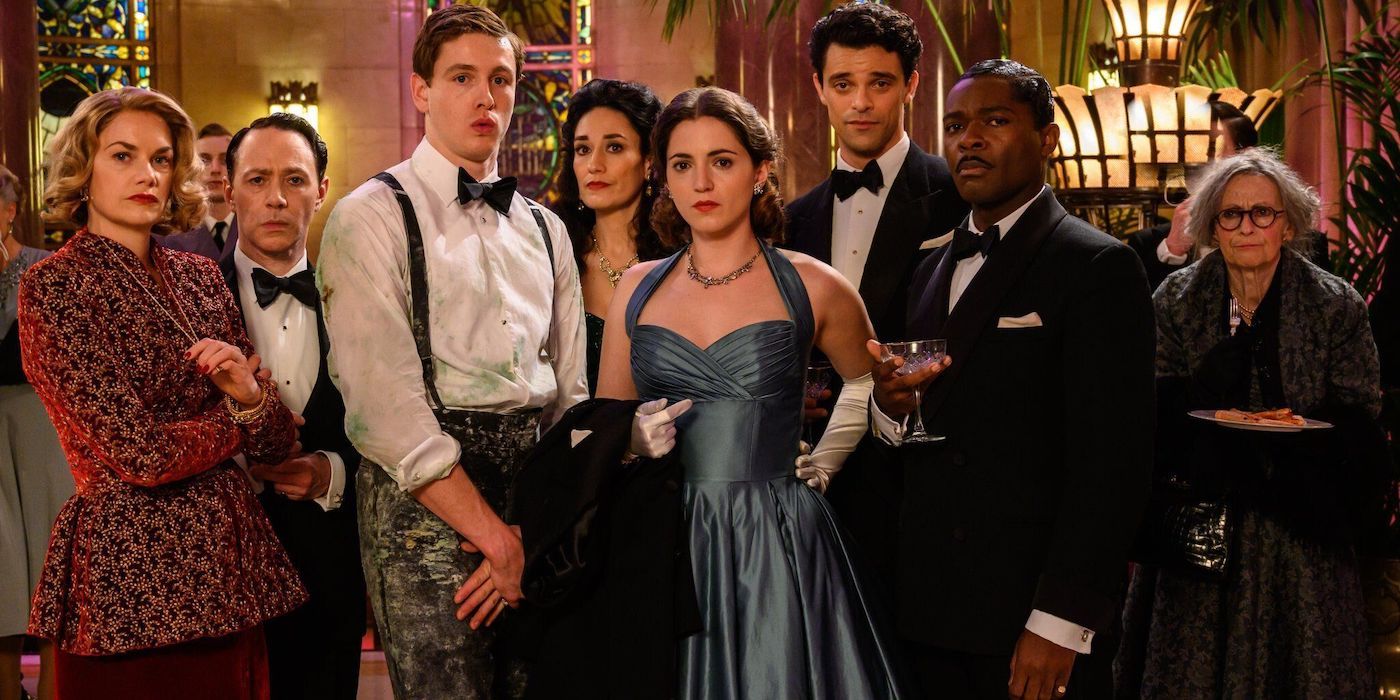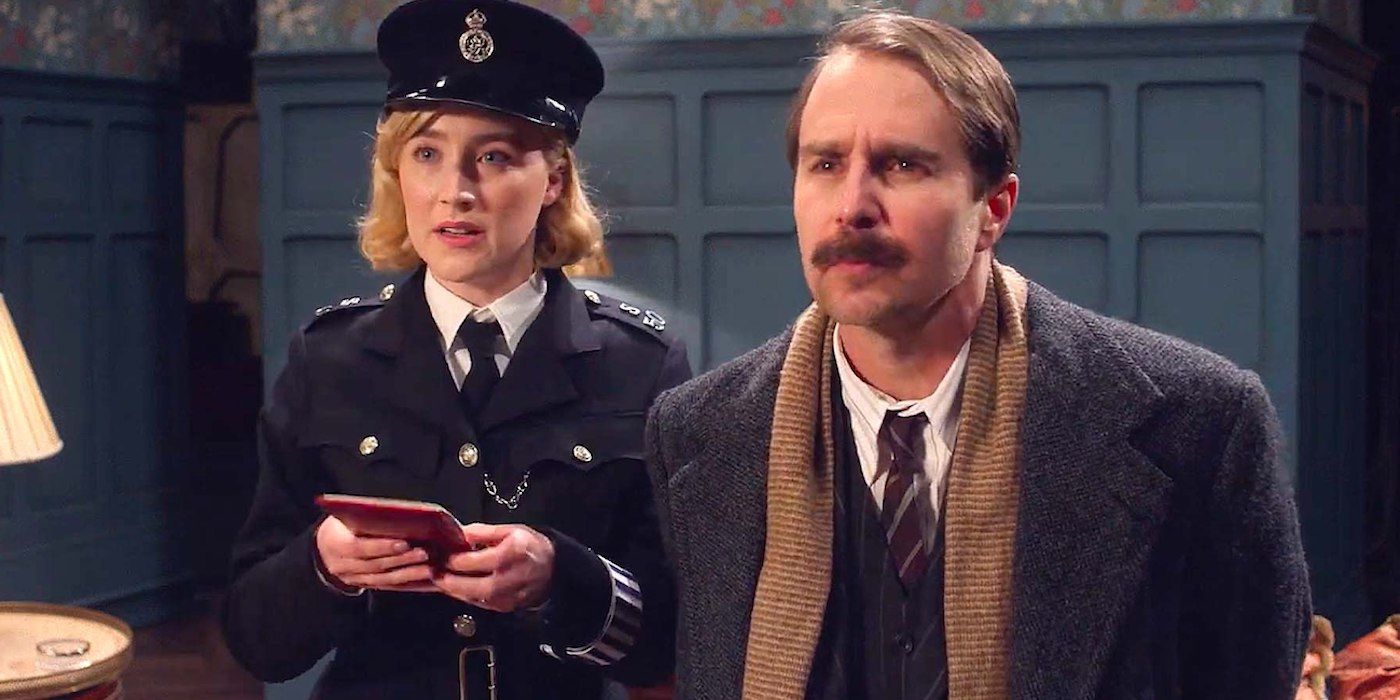Editor's Note: The following contains spoilers for See How They Run.Tom George's See How They Run is a self-deprecating take on the murder mystery genre that also satirizes the business of filmmaking and other storytelling. So it makes sense that the villain’s motivation would include a position on stories. But the particular choices the film makes in this regard bring up an interesting moral question about entertainment, only to unfairly dismiss the idea.
A Story About Stories
The plot of See How They Run revolves around a historically significant whodunit, Agatha Christie’s play, The Mousetrap, with the cast of characters featuring fictionalized versions of real-life figures, including Christie herself, played by Shirley Henderson. The first murder victim is Leo Köpernick (Adrien Brody), a sleazy Hollywood director who has been hired to helm a developing film adaptation of the play. Mervyn Cocker-Norris (David Oyelowo), the playwright who is penning the script of the adaptation, is the next to be killed. Inspector Stoppard (Sam Rockwell) and Constable Stalker (Saoirse Ronan) discover a web of resentment between the cast and crew that points to various potential suspects but, as is usually the case in whodunits, the real killer is very unexpected.
 Turning A Victim Into A Killer
Turning A Victim Into A Killer
After Mervyn’s death, other members of the cast and crew (who are most of the remaining suspects) are invited to dinner at Christie’s home. But when they arrive, Christie’s butler and husband have no knowledge of the gathering, although they still let them in. The party is then locked inside and held at gunpoint by Dennis (Charlie Cooper), an usher from the theater the play is being performed at. Dennis’ full name is revealed to be Dennis Corrigan, one of two brothers’ whose tragic story of childhood abuse served as the inspiration for The Mousetrap. In reality, the boys’ last name was O’Neil and the one named Dennis is the one who died young, while his brother Terence survived. See How They Run's Dennis has always been outraged by the success of The Mousetrap, which he feels exploits his brother's death. He killed Leo and Mervyn to stop the film adaptation from going forward and hopes that killing Christie and the house guests will get the play shut down.
The reveal of Dennis as the killer makes sense given the film's meta-commentary but the legitimate question it raises isn't given the consideration it deserves. The film puts some effort into criticizing how the entertainment industry exploits real tragedies, but not nearly enough. Before the Dennis reveal, there are a few references to how the case inspired The Mousetrap, in which characters point out the fact in obvious attempts to make themselves seem smart and in the know. And while exaggerating his own contributions to the current version of the play, Mervyn, himself one of the aforementioned braggarts, refers to Christie's original version as a mundane story of child abuse, showing that he doesn't even respect the famed author, let alone the victims whose story it actually is.
At Christie's, the group pretends to understand Dennis’ frustration and tries to console him, but they only do so to save themselves from him. Christie expresses sympathy for him but states that to not write about tragic topics would be to deny a part of who she is. This is an understandable viewpoint, but it's also the last word the film says on the issue, and as such is much too simplistic and one-sided. The film would have likely benefited from leaving the argument open-ended. Instead, it comes across as unwilling to commit to its own argument and bends over backward to absolve Christie, its most famous figure, of any implied criticism. This also casts the earlier references to the O'Neil case in a bad light, as the film itself now comes across as just another know it all, pointing out its knowledge of the facts but not understanding their significance.
Should Tragedy Lead to Entertainment?
The film quickly moves on to its quirky finale. Christie serves tea, secretly lacing one of the glasses with rat poison in order to incapacitate Dennis. But the teacups get mixed up and one of the party members accidentally ingests the poison. After discovering Christie’s deception, Dennis resolves to kill everyone again, but Stoppard and Stalker arrive and a shootout ensues. Eventually, Christie herself kills Dennis by hitting him in the head with a shovel, comically going in for more blows before the others stop her. Although Henderson's manic performance is good enough to make this scene darkly funny on first viewing, upon reflection, it adds to the exploitation of the O'Neil's represented by Dennis' role. Making the character a murderous villain and then dismissing his legitimate argument with a wave of the hand is bad enough, but having him meet a violent death similar to the real Dennis' is cruel and immoral, not to mention completely against the ideas the film tries to bring up in relation to him.
At the end of the film, Stoppard and Stalker happily attend a performance of The Mousetrap together and break the fourth wall, telling the audience not to spoil the film for those who haven't seen it much in the same way the play famously asks secrecy of its viewers. Ending on a note that unabashedly celebrates the play like this further emphasizes the film's failure to interrogate it as it promised to. Even if one agrees with the sentiment that the film expresses through Christie, that not even courtesy to victims should stop the creation of art, the debate certainly deserves more consideration than it’s given. See How They Run’s handling of the issue is a major detraction from what is otherwise a clever and enjoyable mystery.


